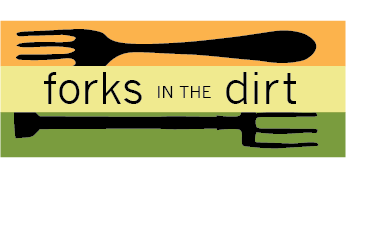Many of us have our tried and true favorite Garden Veggies to grow. Salad greens, tomatoes, green beans, snap peas… so much deliciousness I could never pick out so few as five to highlight from my whole garden.
So instead, I’m sharing my favorite NEW veggies from last Summer’s garden. I love growing ‘new to me’ varieties every year, and usually try out quite a few unique plants each year. Once you start growing from seed a whole new world of flavors opens up to you, and my taste buds will never be satisfied with the same old same old again. For more information on starting seeds, check out my Seed Saving Starts Now blog.
This is a review of my five favorite new to me vegetable varieties.
Romanesco
EAT: fresh, roasted or in stir fry
If ever there was a Diva Vegetable, here she is! The unexpected fractal patterns on this vegetable, paired with the lime green color sets her up to steal the show. The taste is milder than cauliflower, almost nutty. And my kids LOVED IT. It grew well for me in the Spring and Fall. I got seeds from Jung’s Seed Co. and these germinated and grew just as well as their white amazing variety. The purple graffiti was a complete wash for me though.
I loved how the Romanesco’s leaved covered each little pyramid point. The plant itself was even bigger than an average cauliflower, and that’s saying something. Even with taking up considerable space in the garden, I’ll be growing even more this season. I’ll be interplanting beets and spinach for an early harvest before these girls take over the beds.
Tall Utah Celery
EAT: fresh, in soups, as celery salt
This Celery makes the cut because after being scared to grow it I jumped in last year. Guess what, No worries! There are many varieties that don’t need blanching, are so flavorful, yet not bitter! I started them from seed last February, so they do take time, but they are 100% worth it! They don’t take up too much space and play well with others in the garden. I chopped and froze some for soup when I had an abundance.
I also dehydrated and blitzed the leaves for celery salt, which I use in soups and stews.
So, for $3.25 for a packet of Tall Utah from seedsaversexchange I ate fresh cut celery all summer, still have some frozen, and I’ve just started new babies under my grow lights for the coming season!
Glass Gem Corn
EAT: Popped with a drizzle of butter
I’ve been crushing over this for so long, so glad I dove back into these rainbow colored corn rows! This is a flint corn, not a sweet corn, so no fresh eating off the cob. They’re so beautiful you want to have time to enjoy their beauty for a stretch first anyway
We fed some fresh mini-cobs to our hens. I’ve planted some for “corn shoots” micro-greens with varying success, and by far our favorite- popping! I’ve saved some cobs to plant with the kids’ garden clubs I run in the summer (HEARTS) I hadn’t grown any corn for a few seasons after a ‘bad bug’ year, those can take a while to get over… I still had all kinds of insects around the corn this year- just none burrowing into the corn. (whew!) $3.25 for a packet, from Seed Savers Exchange, I planted 3X16 foot bed.
Cucamelons
EAT: fresh from the vine, sliced in salads
These little cuties are as adorable as they are delicious! They also go by the names ‘Mexican sour gherkin’ and ‘mouse melons’. They have a slightly citrus/sour cucumber taste that becomes more pronounced the bigger/more mature they get. These guys were slow to get started, (they like it hotter to germinate) and I totally underestimated how they much they would grow- AND how many little cucamelons they’d produce! Still, giving these away was much easier than say, a zucchini. My kids loved picking these garden veggies as much as eating them- until those really hot late August days after eating these daily… we still have some ‘pickled’ versions in the fridge- both a garlic and a straight ferment- they are a bit more sour than a regular fermented pickle, but add a great kick to salads and cheese trays! We’ll be growing these on a full size trellis this summer instead of in with our beans, lesson learned! Seeds from Baker Creek Heirloom Seeds, which shows up online as Rare Seeds
Berner Rose Tomato
EAT: like an apple, plus any other way you eat tomatoes.
This tomato was the workhorse of my dreams last summer. I was gifted seeds from family in Switzerland, the true “Berner Rose”, a Swiss heirloom variety of German Pink. These were the best germinating and hardiest of all my tomato plants from the start. These are a potato leaf determinate plant that gave me the tastiest tomatoes that didn’t split, wilt or get any diseases. I’ll know to use thicker stakes on these this year because they produce SO MANY tomatoes on each cluster, my gardens looked a little like a mouse trap by September. Still have gallon bags of frozen, a few jars of sauce and salsa- these are the tomatoes that just keep giving! Thank you to my cousin, Seraina, for the thoughtful gift 😊 I wish shipping the tomatoes back to her was a viable option !
DIG IN!
So, have I inspired you to try any new garden veggies in your garden? Or maybe to buy a new variety from farmers markets yet? Let me know if you plan to grow any of these varieties or have questions I didn’t answer above. I can’t wait to DIG IN!
-Michelle
Like this:
Like Loading...


















































